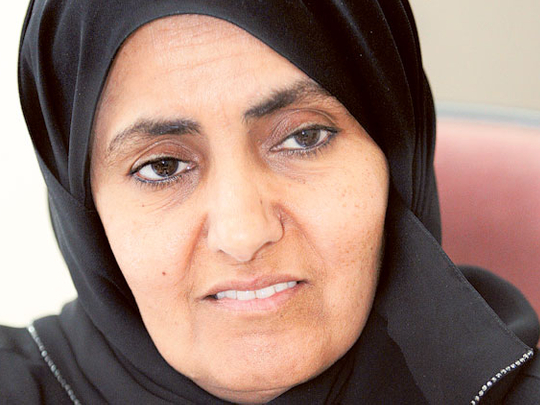
Dubai: Health risks of radiation exposure during diagnostic checks like CT scans have been drastically cut down by a team led by an Emirati specialist.
Dr Jameela Salem Al Suwaidi, consultant medical physicist at Dubai Hospital, and her teammates have reduced the exposure by 50 per cent in some cases.
She said the development means such scans at Dubai Health Authority (DHA) hospitals and clinics are well within the acceptable limits of exposure.
CT scans, short for Computed Tomography, use X-rays and imaging technology to produce 3D images of the insides of the body. They can detect serious health complications like cancer, brain haemorrhage, deformity or trauma invisible in two-dimensional techniques.
Ironically, the radiation involved itself carries a small increased risk of cancer and DNA damage.
Dr Jameela — who the DHA says is the only Emirati specialising in radiation physics in medicine — and her colleagues have halved exposure dose levels in such diagnostic procedures.
“This is not new in the world, but in our area here, it’s new,” Dr Jameela said.
She was awarded the 2012 President’s Merit Award for her contributions in this specialised field by President His Highness Shaikh Khalifa Bin Zayed Al Nahyan on National Day in Abu Dhabi.
Dr Jameela said the project was challenging as reducing dose levels also reduces image quality, making the scan pointless.
“You have to use it, the risk is small compared to the chance to save lives. But it’s not easy to keep the image quality to the level a diagnostic specialist can analyse.
“Because CT scans use a series of images, the radiation is higher than in regular X-rays. We looked at options to halve the dose level without compromising the image,” she said.
The scans are typically taken with the patient lying down, and in Dr Jameela’s research the dose was controlled according to the thickness and length of the body.
Also, the scan’s scope was strictly limited to the target area and its speed was increased to cut down exposure time.
“It’s about reducing the risk, you don’t have to go beyond the need. Radiation safety means patient and staff safety.”
Dr Jameela has established the speciality in DHA, and oversees quality and safety standards related to radiological equipment and nuclear medicine.
She had also established a medical physics undergraduate degree programme in UAE University in Al Ain, which is currently not available.
“The programme is offered at the postgraduate level as a standard in other countries. We’re looking to now establish this at the postgraduate level,” she said. In addition, the specialist has worked on a number of national and international projects in co-ordination with nuclear watchdog IAEA (International Atomic Energy Agency).
Another achievement is her role in organising local conferences in this field while participating in those abroad.
When asked which discipline she likes more — physics or medicine — Dr Jameela said: “Well, I like both. The most important thing is to serve the patient.
“I’ve always liked physics and was looking for a way to combine the two.
“Nuclear physics is something you can’t see, but you can see the effect of it.”











